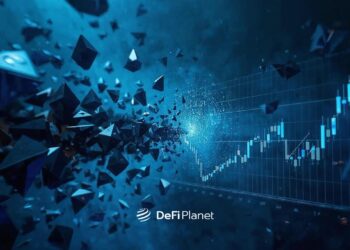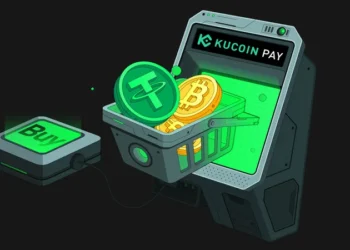Stablecoins are digital currencies designed to maintain a steady value, typically pegged 1:1 with a real-world currency like the U.S. dollar. Popular options include USDC, DAI, and USDC, but even in 2025, depegging events, where these coins lose their value, continue to occur. Are stablecoins finally becoming reliable? Or are they still too risky?
Why Do Stablecoins Lose Their Pegs?
The image above shows the major reasons why stablecoins could lose their pegs. Stablecoins primarily come in two styles: collateralized and algorithmic. Collateralized coins are backed by assets like cash or U.S. Treasuries, with USDC being a top example, fully backed by liquid reserves. Algorithmic coins, such as DAI, manage value through smart contracts rather than real assets, but the 2022 crash of TerraUSD demonstrated the risks associated with algorithmic models.
Even collateralized coins can perform poorly. In March 2023, USDC dropped as low as $0.90 when its issuer, Circle, had $3.3 billion in a bank that was collapsing. These events tend to shake confidence. Thankfully, USDC recovered quickly.
How Often Do Stablecoins Lose Their Peg?
Recent research shows that USDC and DAI are more prone to depegging than USDT or BUSD. From June 2021 to mid-2023, the longest USDC drop to $0.90 lasted 23 minutes. BUSD barely moved out of line. This tells us that even small disruptions in reserve quality can impact prices, especially for collateralized coins.
The Push for Better Oversight
Regulators are stepping in, and in the U.S., the GENIUS Act would require stablecoins to hold 1:1 collateral with safe assets, undergo monthly audits, and report reserve details publicly. In Europe, new rules treat foreign stablecoins such as USDC or USDT as regulated, ignoring origin, which puts all under closer watch.
Central banks aren’t standing by, and the Bank for International Settlements warns stablecoins could weaken financial stability without strong oversight, urging faster moves to CBDCs, digital versions of national currencies.
READ ALSO: STABLECOINS VS CBDCs: WHY GOVERNMENTS ARE PICKING SIDES IN THE FUTURE OF MONEY
Real-World Impact on Stablecoins
U.S. regulators have recently rescinded guidance on bank custody of stablecoins; however, they still require issuers to be licensed under federal law. Circle’s IPO supports its strong backing and compliance, while Tether may need significant changes to meet U.S. rules due to its partially backed reserve.
Full transparency and strong backing mean more trust. For example, Circle’s USDC invites institutional players, such as Visa and exchanges, to adopt it, making it more mainstream.
Hybrid Systems: The Best of Both Worlds
Researchers propose hybrid models that combine CBDCs and stablecoins, and these systems use central bank digital money as a backup to make private digital tokens more stable. A study found this design would prevent panic-related problems during events like the SVB–USDC depeg. This may be the future: stable, programmable digital money backed by public systems.
Who’s Winning the Trust Battle?
Currently, collateral-based stablecoins like USDC are leading the market because they are less prone to depegging, enjoy strong regulatory oversight, and attract institutional investors. Algorithmic coins remain a niche but high-risk option, while stablecoins like USDT and BUSD are in a wait-and-see mode, subject to tighter regulations.
The stablecoin market remains massive, accounting for 7.7% of the entire $3.32 trillion crypto market, with U.S. dollar-pegged stablecoins accounting for 99% of the nearly $260 billion stablecoin market. Regulators want safer systems, while users and institutions want stability and usability.
What Users Should Know
- Check the reserves: Stablecoins backed by cash or Treasuries are safer than algorithmic ones.
- Watch the rules: U.S. and EU law changes matter, and any lack of transparency may lead to sudden problems.
- CBDC hybrids are coming: These may offer even more trustworthy options in the future.
The Future
Stablecoins have come far since 2020, but they still face challenges with depegging events, regulatory shifts, and the rise of CBDCs reshaping the landscape. Well-backed tokens like USDC are gaining trust, while algorithmic versions are fading. We may soon enter a new era with hybrid systems offering digital money that is both stable and programmable.
In 2025, stablecoins may finally live up to their promise, or prove that true stability needs public trust and regulation. But for now, careful users and investors are focusing on coins with real resources, transparency, and legal oversight, hoping to keep the future digital dollar strong and reliable.
Disclaimer: This article is intended solely for informational purposes and should not be considered trading or investment advice. Nothing herein should be construed as financial, legal, or tax advice. Trading or investing in cryptocurrencies carries a considerable risk of financial loss. Always conduct due diligence.
If you want to read more market analyses like this one, visit DeFi Planet and follow us on Twitter, LinkedIn, Facebook, Instagram, and CoinMarketCap Community.
Take control of your crypto portfolio with MARKETS PRO, DeFi Planet’s suite of analytics tools.”





















